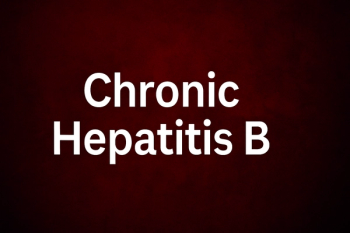
A Clinical Decision Support Strategy Boosted Influenza Vaccination Rates Among Hospitalized Children
A clinical decision support (CDS) strategy including a default influenza vaccine order for eligible patients, a nursing script using a presumptive strategy, and education for clinicians, was associated with significant improvement in vaccination rates among hospitalized children, a new study showed.
Incorporating a clinical decision support (CDS) strategy was associated with significantly higher odds of hospitalized children receiving the influenza vaccine, a recent study found.
The quality improvement study, published in
“Clinical decision support (CDS) in the electronic health record (EHR) that integrates with clinicians' workflow can significantly improve use of evidence-based practices such as providing influenza vaccine to eligible hospitalized children,” Evan Orenstein, MD, pediatric hospitalist and chief medical information officer, Children's Healthcare of Atlanta, Emory University, told Contagion. “Many QI are limited to pre/post designs (i.e. what was the vaccination rate before and after the intervention). These approaches are susceptible to inappropriate conclusions from secular trends -- for example we know the vaccination rate naturally falls the later we get in the flu season. Step-wise implementations that provide both historical and concurrent controls are practical and improve the scientific rigor of QI interventions.”
The study examined a CDS intervention that included placing a default influenza vaccine order into admission order sets for eligible patients, a nursing script to offer the vaccine using a presumptive strategy, and education for clinicians including links to references.
“Small changes in CDS design can have a large impact on behavior,” Orenstein said. “For example, adding links to references justifying influenza vaccine for immunocompromised children or for those on steroids changed how physicians behaved during usability testing. Similarly, providing nursing flexibility by placing the influenza vaccine order in admission order sets instead of at the time of discharge made it easier to get the vaccine in despite a busy hospitalization. Finally, we were surprised that the vaccination rate among our concurrent controls (hospitalizations during the same season where we intervened but who were not exposed to our CDS intervention) was significantly higher than our historical controls (hospitalization in the prior flu season). We suspect this may have been due to the fact that physicians were seeing influenza vaccine orders in their workflow more often for the intervention group and were therefore reminded about the vaccine more often.”
Among the study participants, the average age was 8 years, 52% were boys, 50% were Black, 43% were White, and 64% had public insurance. The study authors noted that hospitalized children are at higher risk for morbidity and mortality related to influenza, but vaccine coverage is lower than the national average for this group.
The odds of receiving the influenza vaccine were 3.25 (95% CI, 2.94-3.59) times higher in the intervention group and 1.28 (95% CI, 1.15-1.42) times higher in concurrent controls than in historical controls, the study found. An influenza vaccine was ordered for 4199 out of 5449 (77%) hospitalizations in the intervention group and administered during 1676 (31%) hospitalizations. In the concurrent control group, an influenza vaccine was ordered during 1488 (27%) of hospitalizations and administered during 1051 (19%). In the historical control group, an influenza vaccine was ordered during 1024 (15%) hospitalizations and administered during 912 (14%).
The odds of receiving the vaccine were highest early in the influenza season, declining by 3.7% with each additional week into the season. Age also was evaluated, with adolescents ages 13 to 17 being 28% less likely to receive the vaccines than children ages 6 to 23 months.
Further research is underway to improve influenza vaccination rates among children.
“While we saw significant improvements in flu vaccination rates, even among our intervention group only 31% of eligible hospitalizations had a flu vaccine administered,” Orenstein said. “We are undergoing a thorough analysis of the reasons why flu vaccines get ordered but not administered and developed additional CDS interventions for the 2020-2021 influenza season. We will be evaluating the effectiveness of those in concert with the interventions described here.”
“We are hoping to expand the use of this CDS beyond a single institution to determine if this pattern is effective in other health systems,” he added. “We are evaluating similar strategies in different care settings—i.e. the emergency department and ambulatory specialty clinics.”
The importance of vaccination is heightened amid the COVID-19 pandemic. Investigators are studying the possible
Efforts to improve vaccination rates and influenza vaccines are ongoing.
The National Institutes of Health recently began a
Newsletter
Stay ahead of emerging infectious disease threats with expert insights and breaking research. Subscribe now to get updates delivered straight to your inbox.
















































































































































































































































































































